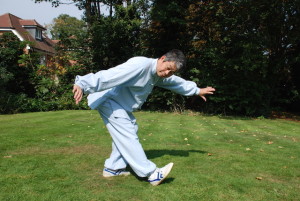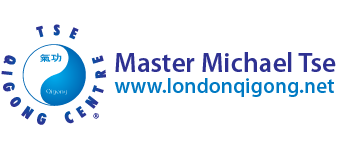Master Tse’s Qigong Dao 234
Wai Gong 外功
 Practising Qigong we have Nei Gong 內功, which is internal training, however we also have Wai Gong 外功 – external training. Many people only think about internal training for their Qigong, however, Qigong also has external training in order to balance the internal training. Like we have our warm ups and Chun Yuen Quan, these are more external training.
Practising Qigong we have Nei Gong 內功, which is internal training, however we also have Wai Gong 外功 – external training. Many people only think about internal training for their Qigong, however, Qigong also has external training in order to balance the internal training. Like we have our warm ups and Chun Yuen Quan, these are more external training.
External training focuses more on the posture, the muscles, tendons and bones, so it can also include stretching. We have a lot of stretching in the Wild Goose, for example, the 11th movement Bend the Waist 下腰 and the 63rd movement, Sleep Peacefully and recover Qi 安睡歸氣 are stretching, so we can see that Wai Gong is important as well. In Qigong it is usually 70% Nei Gong and 30% Wai Gong.
The Chinese character for Wai 外 has two parts. The left side Xi 夕means sunset, it looks like the moon, but it is not the character for moon月yue. The right side is Bo 卜, which means prediction, it looks like a crack. In the old times a Chinese fortune teller would make a predictions using a turtle shell. They would look at the cracks in the shell and use these to make their predictions. Bo is a crack and it means a crack from one side to another. So Wai is the sunset from one side to the other, together Wai means outside. In China, when they see a foreigner, they say, “Lao Wai 老外”, which means Old Foreigner. Lao 老 means old, it is not an insult, it means knowledgeable or long relationship.



Leave a Reply
Want to join the discussion?Feel free to contribute!